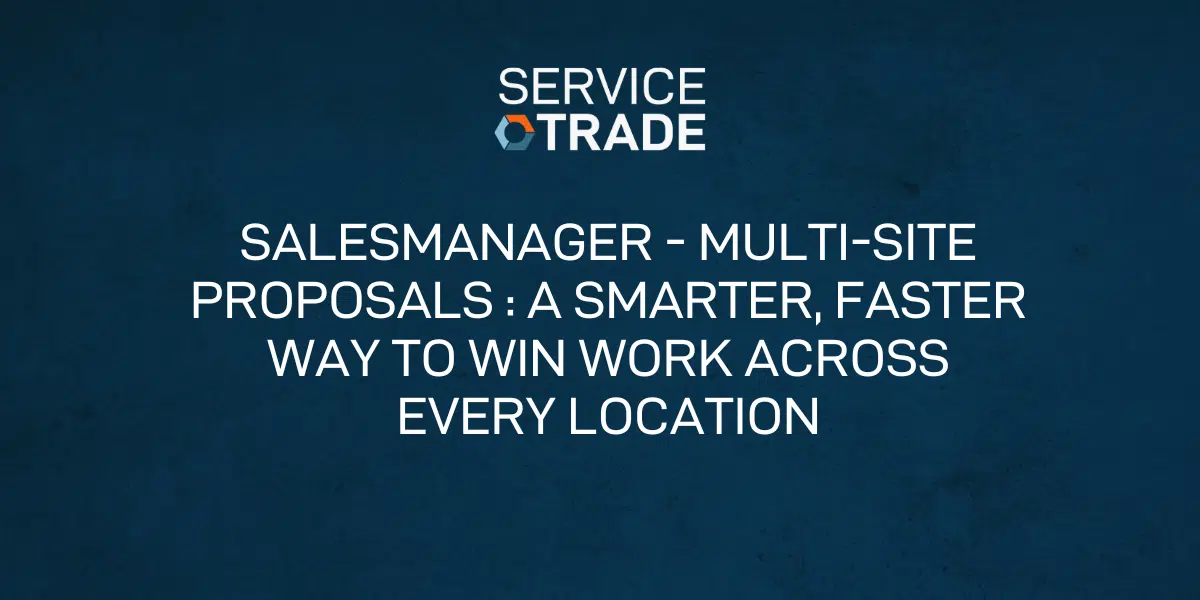Key Performance Indicators That Drive Contractor Business Value

If you’re looking to sell your commercial service business, you probably know this: buyers don’t just want a good business, they want a predictable one. Amid skilled labor shortages, fluctuating material costs, and tighter capital budgets, the commercial service businesses that stand out are those that can show consistent, reliable performance.
KPIs offer a data-backed story of your company’s health, stability, and growth potential.
Whether you’re preparing for acquisition or simply want to build a business with long-term value, this post will explore the financial, operational, and customer-focused KPIs that increase your EBITDA multiple and make you more attractive to buyers.
Why KPIs Matter in Business Valuation
Strategic buyers, private equity firms, and even larger contractors evaluating acquisitions all look for one thing: proof that your business works—with or without you. KPIs offer that proof.
Strong KPIs signal to buyers that your business is well-managed, profitable, and scalable. They reduce risk in a transaction and help justify a higher EBITDA multiple, the valuation metric that determines your sale price. Buyers and brokers alike use these KPIs to assess your company’s ability to generate revenue predictably and profitably over time.
In short: KPIs don’t just describe your business, they define its value.
The Most Valuable KPIs for Commercial Contractors
Let’s break down the metrics that make the biggest impact across three key areas: financial performance, operations, and customer satisfaction.
Financial KPIs
1. Gross Profit Margin
This metric reflects how efficiently you turn revenue into profit after direct costs. In an environment where materials and labor costs are rising, protecting your margin is critical. Contractors with cost-plus pricing strategies are better able to preserve profitability and scale with confidence.
2. EBITDA
Buyers use EBITDA (Earnings Before Interest, Taxes, Depreciation, and Amortization) as a standardized measure of profitability. A high and steady EBITDA signals a financially healthy business. Even more important is the predictability of EBITDA—made possible through stable, recurring service agreements, which provide insulation against volatile project pipelines and uncertain capital budgets.
3. Revenue per Technician
This KPI shows how much revenue each technician generates and is especially important amid the skilled labor shortage. High-performing teams maximize technician hours through better scheduling, fewer callbacks, and reduced windshield time—all of which increase this metric.
4. Cash Flow
Cash is king. Positive, consistent cash flow indicates a business that can support operations and weather tough periods without relying heavily on debt.
5. Accounts Receivable Turnover
Slow collections can kill deals. Buyers want to see that you collect on work quickly and consistently—evidence of both customer quality and billing efficiency.
Operational KPIs
1. Technician Utilization Rate
Are you maximizing your most expensive resource? This metric tracks how much of a technician’s time is spent on billable work. Reducing travel, admin distractions, and idle time boosts both revenue and morale.
2. Service Agreement Renewal Rate
Recurring contracts are a key source of predictable revenue. High renewal rates demonstrate customer satisfaction and a sticky service model.
3. First-Time Fix Rate
This measures how often your team resolves issues on the first visit. A high rate reduces callbacks, increases customer satisfaction, and makes your business more efficient.
4. Work Order Completion Time
Buyers want to see tight, efficient operations. Faster job completion means more work done with the same resources—an indicator of strong internal systems.
Customer-Related KPIs
1. Customer Retention Rate
Acquiring new customers is expensive. Retaining them—and the recurring revenue they bring—is a cornerstone of business value. Strong retention rates show that your company consistently delivers value.
2. Customer Satisfaction (Net Promoter Score)
High NPS scores reflect loyal customers and a strong reputation—both critical for attracting and retaining high-value clients.
How to Improve These KPIs
Improving KPIs takes more than good intentions—it takes the right tools and systems. That’s where ServiceTrade comes in.
- Boost Technician Productivity: ServiceTrade helps your office assign the right technician to the right job at the right time with everything they need. Technicians spend less time on admin and more time doing great work—improving utilization and revenue per tech.
- Increase Customer Retention: Our platform supports transparency, communication, and service excellence—making it easier to show customers the value you deliver and win their loyalty.
- Protect Gross Profit Margin: With cost-plus and markup pricing workflows, ServiceTrade helps you quote work more accurately and profitably—especially in volatile cost environments.
- Streamline Operations: Get real-time visibility into work orders, technician schedules, and billing, so you can tighten completion times and eliminate bottlenecks.
- Track What Matters: ServiceTrade makes it easy to monitor your KPIs, so you can adjust quickly and stay on track toward your strategic goals.
Whether or not you’re thinking about selling your business one day, tracking and improving your KPIs is essential. These metrics offer a window into your company’s performance and future potential. They help you operate more strategically today, and make your business more attractive to buyers tomorrow.
Want to get started? Let KPIs be your guide, and let ServiceTrade be your partner.

STOP TYPING. Start Scanning. Technicians have always done whatever it takes to get the job done, but manual asset entry has never been the part they enjoy. Between faded serial plates, tiny lettering, and tight schedules, capturing equipment details by hand slowed everyone down. And when the data wasn’t complete or accurate, the office was […]
You’ve invested in software. You’ve digitized processes. You’ve built dashboards. Yet somehow, your team still asks, “Whose numbers are right?” You’re not alone. Many commercial service contractors invest heavily in data tools only to see minimal ROI. The problem usually isn’t the technology—it’s one of these five critical failures. Failure #1: Skipping Stages The mistake: […]